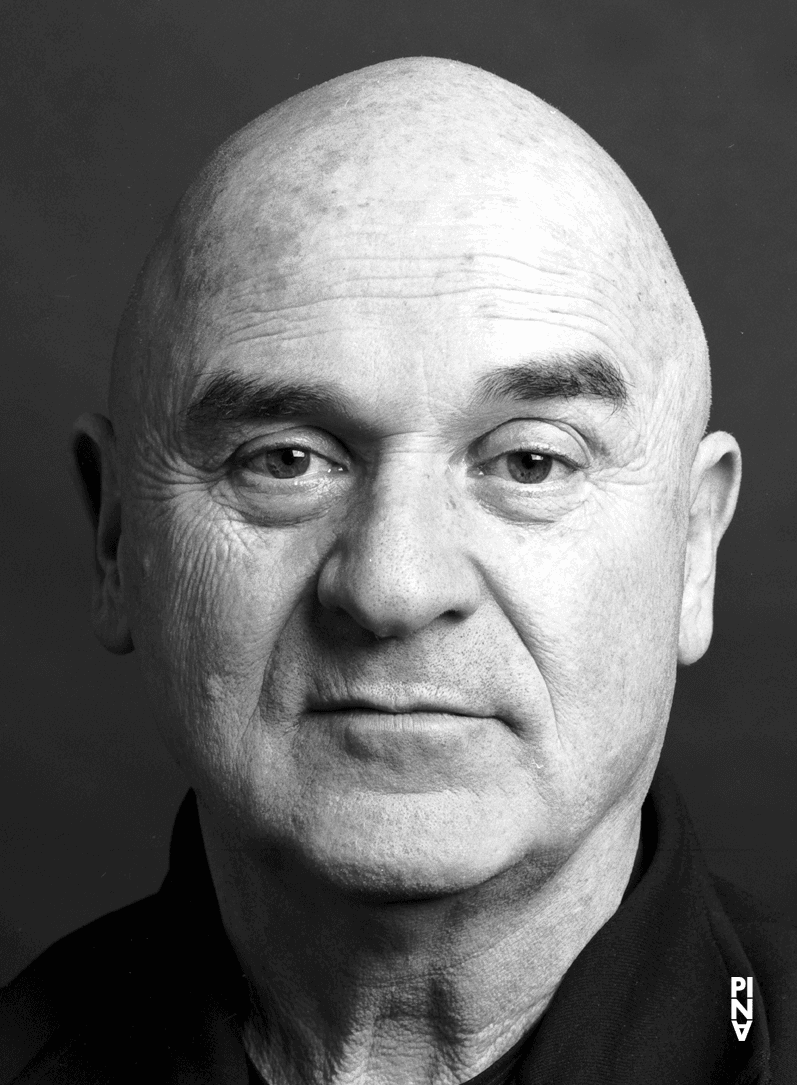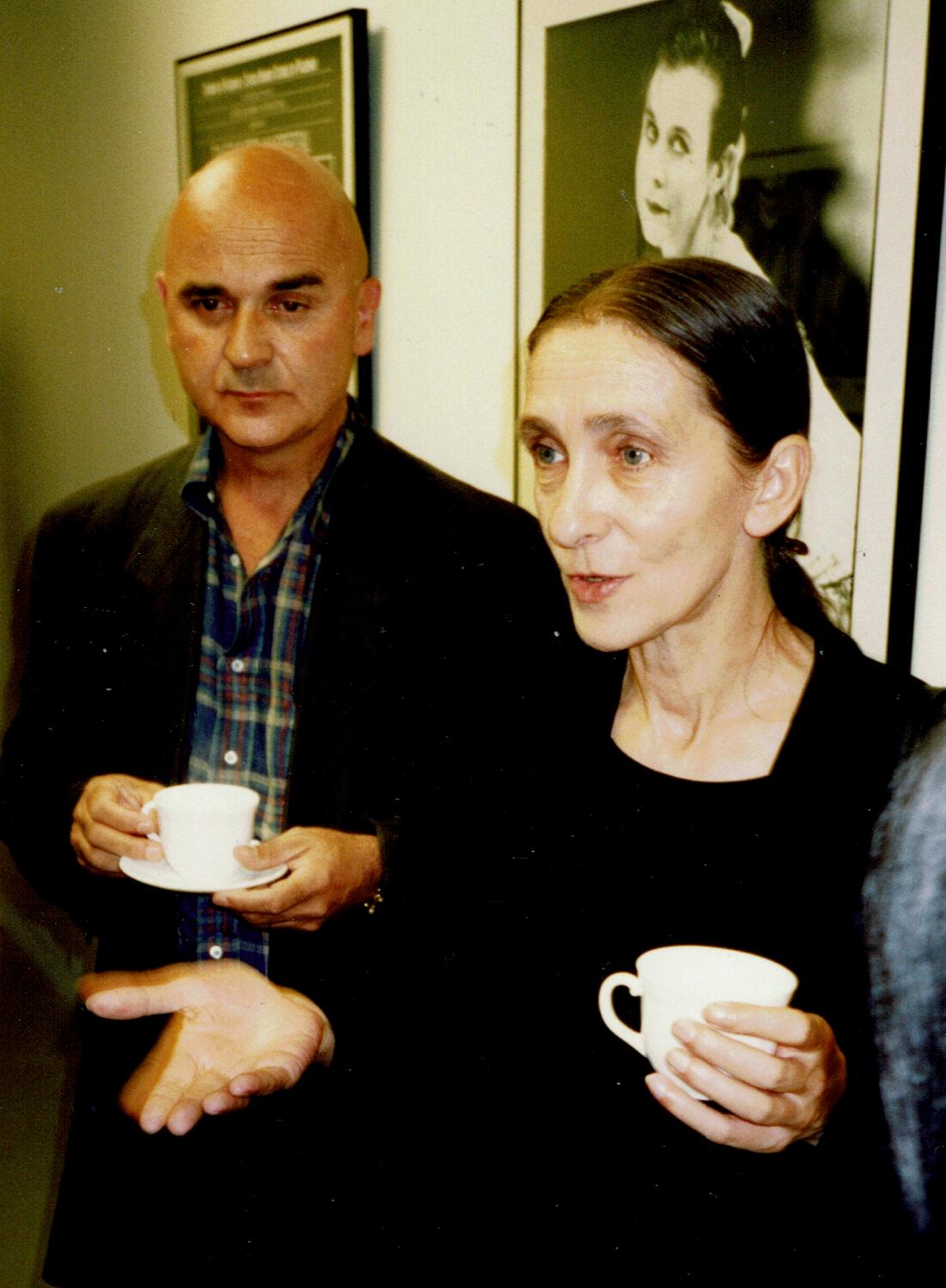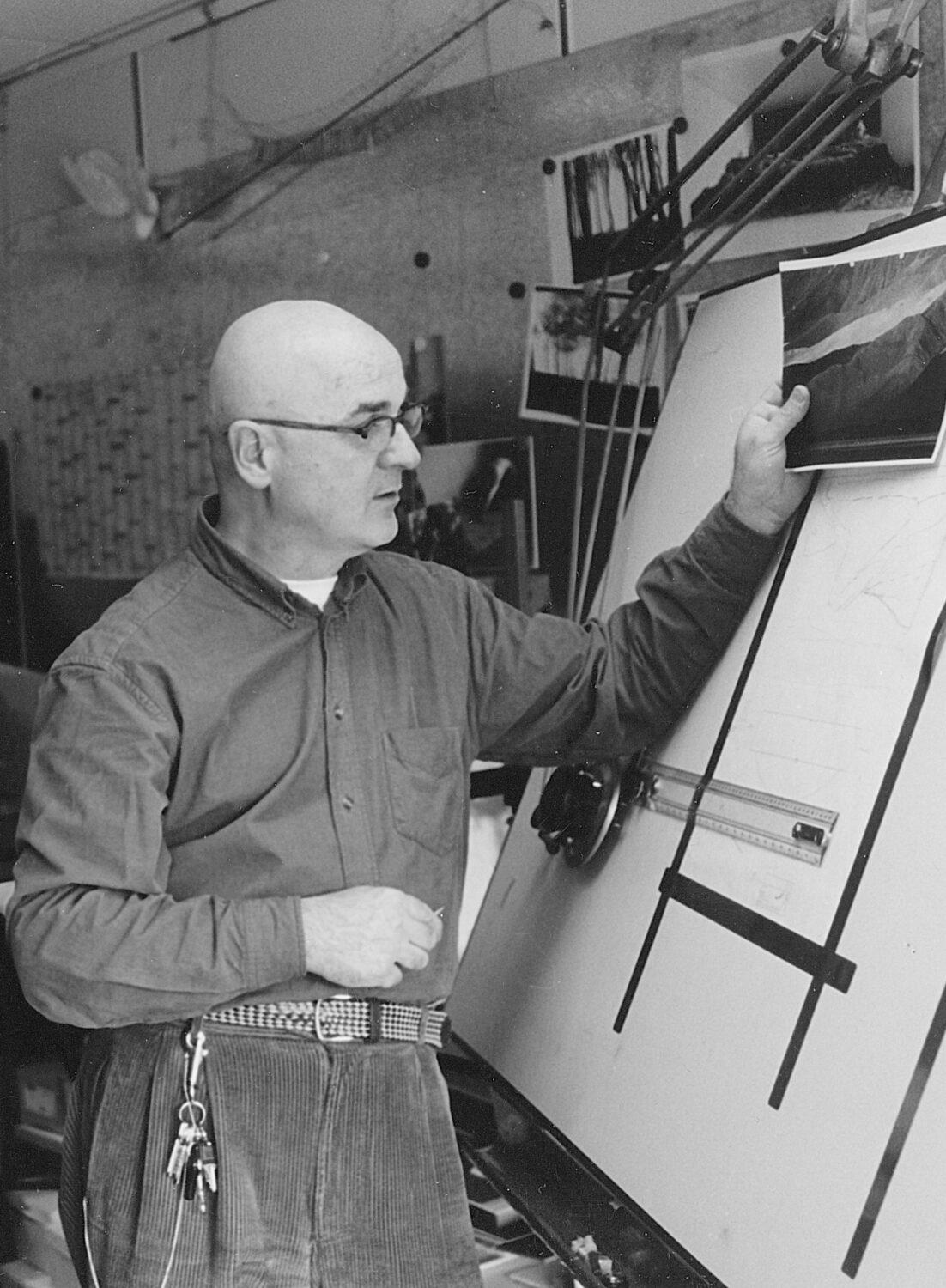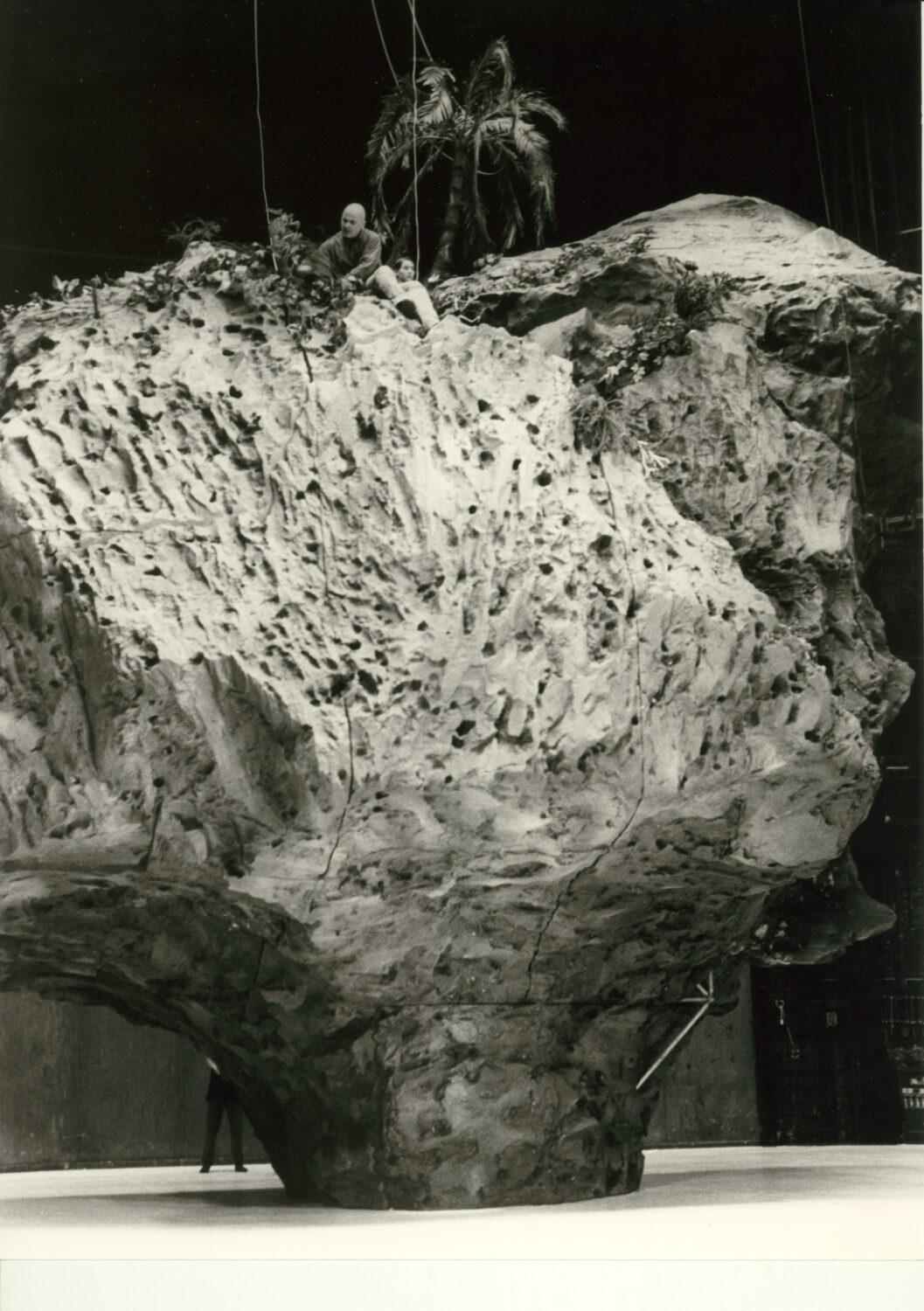Peter Pabst: About my work
In 2008 Peter Pabst talked about his work as a set designer, identifying various particular points and outlining his ideas.
Peter Pabst in the set of “Ahnen”
Set design
With my set designs I create physical and visual contexts for the actors/singers/dancers. A set should never be impressive on its own, only via the actors.
My designs may be exciting, playful, tough, powerful, beautiful, ugly… but they never have a meaning of their own. I’m not interested in having someone say, what a wonderful set that Pabst has made! It should create the optimal environment for the actors/dancers to tell their story.
Ideally I like to work with people who are just as difficult as me. I constantly try to take new paths.
Pina
Meeting Pina Bausch and working with her was a massive stroke of luck for me, because I had much more freedom making sets there than anywhere else.
It was a gift to meet someone I could work with for so long – and it hasn’t stopped. It’s an open-ended Endeavour each time. We don’t follow any kind of system or model – it just emerges.
Peter Zadek taught me to be curious, to love the actors, and above all, to work as a team – all to an unremittingly high, serious level. It was very demanding at the time, but instructive.
Working process
If you assume set designs should not be something beautiful sitting up on the stage, but instead provide a kind of aesthetic and spatial context for the piece, still developing, then it means you are floating in the dark for long time. If the set simply had to be beautiful, I could work independently; I could do some nice painting on three walls without being dependent on the rehearsals.
I do what any good architect would do too: always talk to the technicians and craftspeople, ask what’s possible, and take on board the opinions and solutions offered by others. Otherwise I would be letting an incredible amount of potential go to waste. Theatre workshops can be incredibly awkward, but they can also do wonders if you cooperate properly with them.
When I’m developing an idea, building my model, I think about light from the start, in other words, not first the space then the lighting, but both together.
It’s always a search. There’s always that fear of not being able to do it. Having no safety net, no handhold, also means incredible freedom. The lack of support is torture, but also a great fortune.
An important point is not to just hang onto the rope of the first idea, but to muster the strength to continue in uncertainty and swim on.
I’ve never suffered when the budget was tight. It forced me to think harder and be more creative. I can handle that pressure easily.
Set designs are to be looked at – what am I meant to say about them?
When the revelation comes, can’t be controlled.
Sources of inspiration
Staying open minded doesn’t come via source material at all, I don’t think. You don’t need visual aids there, because often you don’t know what you are looking for. I do know, however, that I need something. Staying open minded is more of a process you adjust yourself to. When images suddenly bombard me, in whatever form – books, newspapers, magazines, films, or in moments happening in front of me – it eases the process. When I see something where I think, wait, it could be like that, it opens the floodgates again.
I see everything in the light of how it will relate to the activity on stage. Sometimes I knew what the effect would be and sometimes it just happened. That’s part of the openness. The joy of curiosity is really that things happen which we knew nothing about before, that you experience things you would never have thought of, but you take them on board happily. I love that kind of thing.
Nature and art
Nature has a rather brittle relationship with the artistic space of the stage. That’s a great source of tension in fact. Nature is always something fresh. I can’t just take nature as it is and put it on stage. I’m forced to do something with it. Its freshness is an important part of the pollination process.
Nature is becoming ever more important to me, a growing desire. Perhaps it’s also because I’m developing a greater feeling for nature the older I get. I’m not getting any cleverer, but I am gaining experiences.
With my stage set I have to find my own artistic form. Natural materials beckon because they have such wonderful forms for biological reasons. And they’re unruly, because they don’t really belong in the theatre, in an artistic space like this. Water doesn’t belong in the theatre, and it causes a lot of problems. Natural materials work well with dance theatre, because they are warm, sensual.
Nothing wants to be art less than nature. Anything which has already become art and found its form, is uninteresting to me as material. What’s interesting is what isn’t yet art. Nature has a diversity which never exhausts itself.
Video
I’m not interested in the technology, I’m interested in whether the images are strong and how they affect the dancers and the space.
I always have to make sure it doesn’t take the dancers’ freedom away. It would be stupid if the film was like a corset for the dancers. It should enrich, not constrict.
Pieces
Normally we shuffle the aesthetic experiences we’ve gained in life afresh each time, like in a card game. Here in Wuppertal, however, there are things we haven’t seen anywhere, so we don’t know how they work. Such as the wall in Palermo Palermo, where the curtain goes up and something resembling an earthquake happens and it turns out it’s a real wall. Or perhaps I had the idea it might be nice for the dancers to have a moving ground. That then became a swimming island, propelled by the movement of the dancers dancing on it.
In Der Fensterputzer (The Window Washer), it was clear from the start there would be no point in just putting a mountain like that there; it needed to be a toy for the dancers, which could also move.
I first worked properly with videos in Masurca Fogo. The set was quite a claustrophobic space, closed on all sides, with just an entrance at the back right. Otherwise it looked as if lava had flowed in and solidified after a volcanic eruption. When I tried projecting videos onto this closed space, it opened up, sometimes into an endless expanse, sometimes into a landscape of cliffs battered by waves. That wasn’t planned. Curiosity takes the place of much planning.
Exhibitions
These ‘world designs’ were envisaged as homes for the dancers, designed for the audience solely to look at, and I wanted to free them from the theatrical space, make them inhabitable for the visitors, tangible, experienceable – also more playful. Because the viewers shouldn’t need skills; they should just feel and sense. Particularly underfoot.
Working in borderlands
Theatre is a complex process. A work of art that will make an evening of theatre only comes into existence thanks to the creative interaction of everyone involved. Often the stage sets make the difference between no man’s land, neutral territory, and the only possible style.
Boundaries, including temporal ones, can be good. Because the more time I have, the more complicated I become. Borders force you to be precise.
I can part company easily – I can totally throw things away.
Despite boundaries, you have to be able to waste images. Art must be generous.



